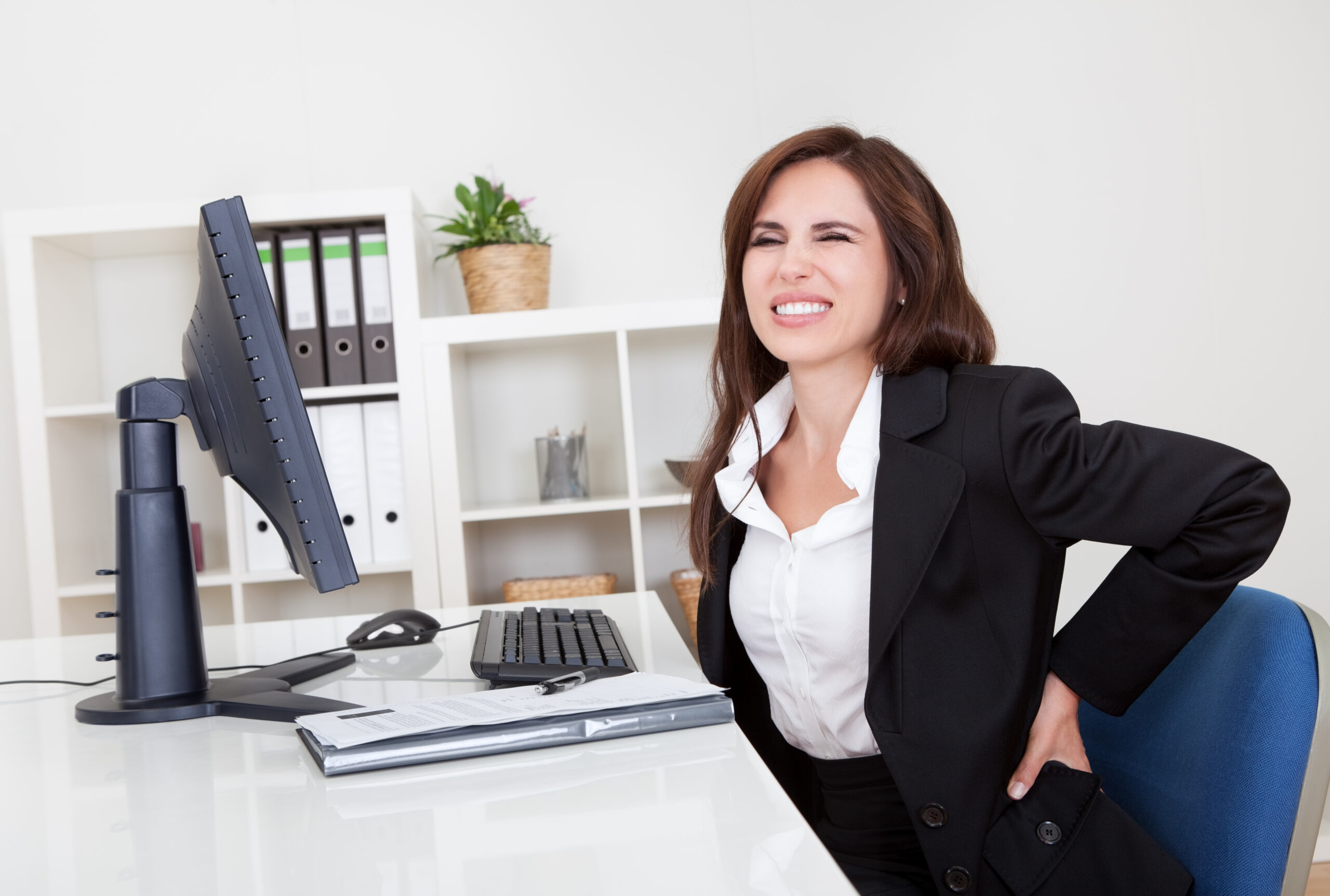
You’ve probably heard and read about ergonomics before. How many of us really pay attention to the best ways to make sure we are working in a comfortable space–and in the best body position–to keep you from straining your neck, getting headaches, etc.?
How many of us? Not enough.
People who stare at technology all day long are at high risk of being diagnosed with a musculoskeletal disorder. MSDs impact your body from the inside out. Sure, your lower back hurts but do you know that you are feeling pain because your muscles, blood vessels, tendons, nerves and ligaments are all impacted when you sit in the wrong position for too long.
By the way, you don’t have to be sitting to get MSDs. Staring down at your phone all day can cause severe neck and shoulder injury. If your job is to move around all day long–perhaps you are a nurse or a teacher–failing to wear the right shoes can cause serious foot, ankle, leg and lower back strain.
We can talk all day about the injuries employees get when they are not taking steps to protect their bodies, but this is not the time for talk. Take action by making sure your workspace is set up for YOU. If that means getting a different chair, or raising your monitor up higher, trying an ergonomic keyboard or putting a stool under your feet so your lower back is supported – do it!
According to the Athlete Desk, “Anyone who lifts, strains, reaches, pushes, or works in difficult body postures in a repetitive way is likely to be at risk for an MSD. Here are a few examples of MSDs:”
It’s Time for a Workspace Makeover
The Mayo Clinic says there are several “office ergonomics” fixes that can be easily done in workspace in an attempt to ward off MSDs.
Keep Things Within Reach
Whether you have a spacious workplace or a tiny cubby, there are certain items you use all the time. These might include your phone, paperclips, garbage can or a particular cabinet. Make sure you can easily reach the items you use often within arm’s length. Don’t strain yourself reaching for the stapler! If you can’t have something within easy reach, stand up and walk over to access them.
Your Phone
A quick note about your phone: whether you use your cell phone for business or you have an old fashioned desk phone AND you type or write a lot while using the phone, use a headset, earpods or put the phone on speaker (if you have a private space) so you aren’t trying to cradle the phone between your chin and neck. Doing this “cradling” trick is sure to be a pain in the neck sooner rather than later.
Your Chair
Unless you are sharing a space with others, it’s important to think about your work desk chair the way you would your bed. YOU need to be able to sit comfortably and safely in it. Therefore, raise or lower, tip forward or back, adjust the arm rests–do what’s necessary to allow you to sit with your feet on the floor and thighs parallel to the floor. The chair must support your back. It should feel good to sit down in your chair. For extra support, get a lumbar back cushion.
Footrest
Speaking of keeping your feet flat on the floor, another option is to place a footrest or small stool under your feet. If you can’t lower or raise your chair or desk, a footrest will give your legs and back the support you need.
Your Desk
You want to be able to sit at the desk comfortably. Make sure there is enough room for your legs (this isn’t an airplane-you don’t have to crunch yourself into a tight space.) If you are tall and can’t fit under the desk comfortably, raise the desk! You can even use blocks to raise it if the desk itself is not adjustable. Also, don’t forget about your footrest! If you need it, make space for it. You may also want to try a stand-up desk that gives you the option to sit or stand throughout the day.
Ah, now we get to some of the most important things you use whenever you are at work. Who among us can get away without using a computer monitor, keyboard and maybe a mouse?
Keyboard and Mouse
“Place your mouse within easy reach and on the same surface as your keyboard,” the Mayo Clinic advises. “While typing or using your mouse, keep your wrists straight, your upper arms close to your body, and your hands at or slightly below the level of your elbows. Use keyboard shortcuts to reduce extended mouse use. If possible, adjust the sensitivity of the mouse so you can use a light touch to operate it. Alternate the hand you use to operate the mouse by moving the mouse to the other side of your keyboard.”
Your Monitor
Ideally, you want to place the monitor an arm’s length in front of you. You want the top of the screen to be slightly below or at eye level. If you are using a laptop and this distance disturbs your ability to ergonomically reach your keyboard, consider getting a full sized keyboard and plugging it into the laptop.
It’s important to make sure that all of the items you use–especially your technology–are placed directly in front of you so you have easy, comfortable access to it.
Remember, this is your personal space and you need it to be designed to accommodate your body. If necessary, speak to your manager or HR about getting you a new desk or other items that will reinforce an ergonomic setup. Your neck and back will thank you!